Bumps on Buttocks from Sweating: 7 Symptoms, Causes, and How to Get Rid of Them
What are the symptoms of bumps on the buttocks from sweating? What causes these bumps? How can you get rid of them effectively? Find the answers to these questions and more in this comprehensive article.
Symptoms of Bumps on the Buttocks from Sweating
If you’re experiencing bumps on your buttocks due to sweating, you may notice the following symptoms:
1. Red, inflamed bumps or pimples
2. Itchiness or irritation in the affected area
3. Tender or painful bumps
4. Small, white-headed pimples
5. Clusters of bumps or a widespread rash-like appearance
6. Rough, bumpy texture on the skin
7. Difficulty sitting or lying down comfortably
Causes of Bumps on the Buttocks from Sweating
There are several potential causes for the development of bumps on the buttocks due to sweating:
1. Bacterial or fungal infections: Sweat can promote the growth of bacteria and yeast, leading to folliculitis or other skin irritations.
2. Friction and irritation: The tight, rubbing motion of clothing against the skin can cause irritation and inflammation of hair follicles.
3. Clogged pores: Sweat, oil, and dead skin cells can clog pores, leading to the formation of bumps or pimples.
4. Sensitivity to fabrics or detergents: Some individuals may have an allergic or irritant reaction to the materials or chemicals used in their workout clothes or laundry detergents.
5. Hormonal changes: Fluctuations in hormone levels can contribute to the development of acne-like breakouts on the buttocks and other areas of the body.
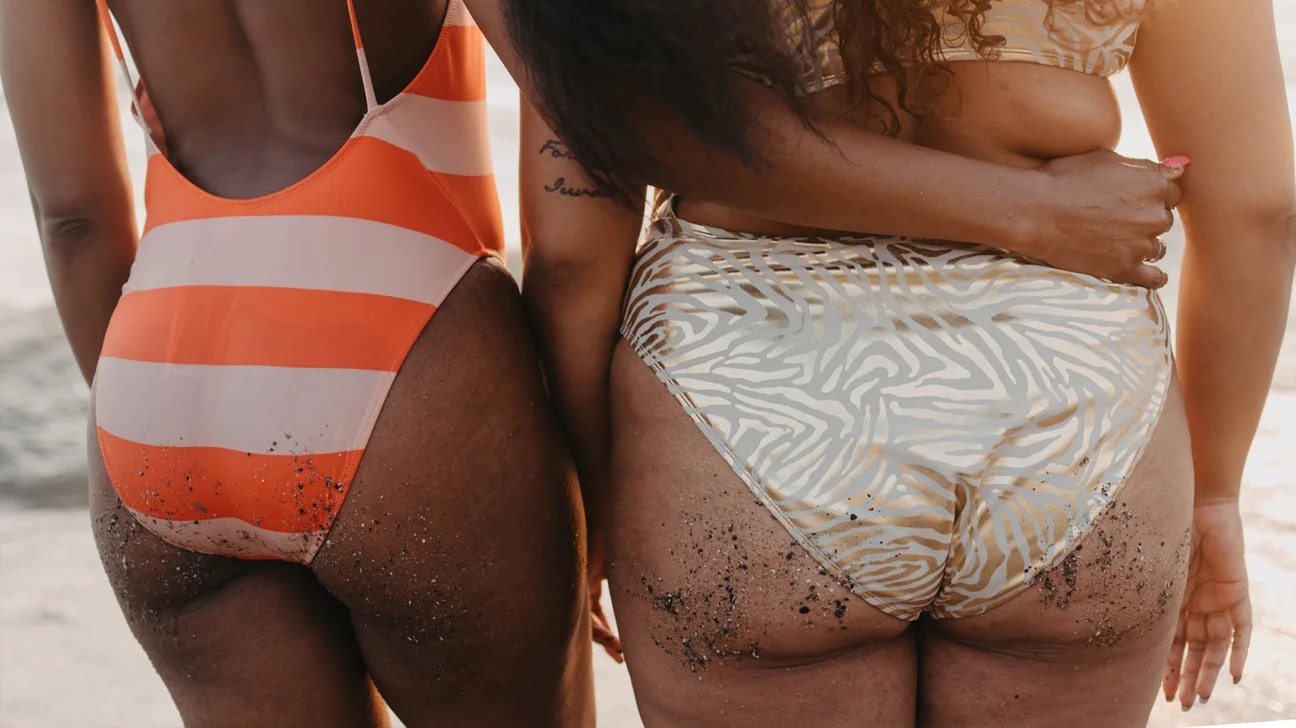
How to Treat Bumps on the Buttocks from Sweating
Fortunately, there are several effective ways to treat and prevent bumps on the buttocks caused by sweating:
1. Practice good hygiene: Shower and change out of sweaty clothes immediately after exercise to remove bacteria and reduce friction.
2. Use gentle, non-irritating products: Opt for over-the-counter acne treatments containing salicylic acid or benzoyl peroxide, and consider using fragrance-free, hypoallergenic laundry detergents.
3. Exfoliate gently: Incorporate a chemical exfoliant with hydroxy acids, such as AmLactin, to help smooth and unclog pores, but avoid overly aggressive physical scrubbing.
4. Wear breathable, moisture-wicking fabrics: Choose workout clothes made from synthetic, sweat-absorbing materials rather than cotton.
5. Consult a dermatologist: For persistent or severe cases, a healthcare provider may prescribe topical or oral medications to help manage the breakouts.
Preventing Bumps on the Buttocks from Sweating
To prevent the formation of bumps on the buttocks from sweating, consider the following strategies:
1. Practice good hygiene: Shower and change into clean, dry clothes immediately after exercising.
2. Choose the right fabrics: Opt for breathable, moisture-wicking materials that won’t trap sweat and bacteria against your skin.
3. Avoid irritating products: Steer clear of harsh scrubs, fragrances, and other potential skin irritants.
4. Exfoliate regularly: Incorporate a gentle chemical exfoliant into your routine to help keep pores clear.
5. Maintain a healthy lifestyle: Eat a balanced diet, stay hydrated, and manage stress levels, as these factors can all contribute to skin health.
6. Consult a dermatologist: If home remedies aren’t providing relief, a healthcare provider can help identify the underlying cause and develop a more targeted treatment plan.

When to See a Dermatologist for Bumps on the Buttocks
While many cases of bumps on the buttocks from sweating can be managed at home, there are some instances when it’s best to seek professional medical attention:
1. Persistent or worsening symptoms: If the bumps don’t improve with home treatment or continue to worsen, it’s a good idea to see a dermatologist.
2. Severe or widespread breakouts: Large, painful, or extensive bumps may require prescription-strength treatments.
3. Signs of infection: If the affected area becomes increasingly red, swollen, or painful, it could indicate a bacterial or fungal infection that needs medical treatment.
4. Scarring or hyperpigmentation: Repeated breakouts can lead to long-term skin changes, which a dermatologist can help address.
5. Underlying medical conditions: In some cases, bumps on the buttocks may be a symptom of a more complex health issue that requires further evaluation and management.
Key Takeaways
Bumps on the buttocks from sweating are a common issue, but there are effective ways to prevent and treat them. Remember to practice good hygiene, choose the right fabrics, and be gentle with your skin. If home remedies don’t provide relief, don’t hesitate to consult a dermatologist for personalized guidance and treatment. By taking proactive steps, you can minimize the discomfort and appearance of these pesky bumps and maintain healthy, comfortable skin.
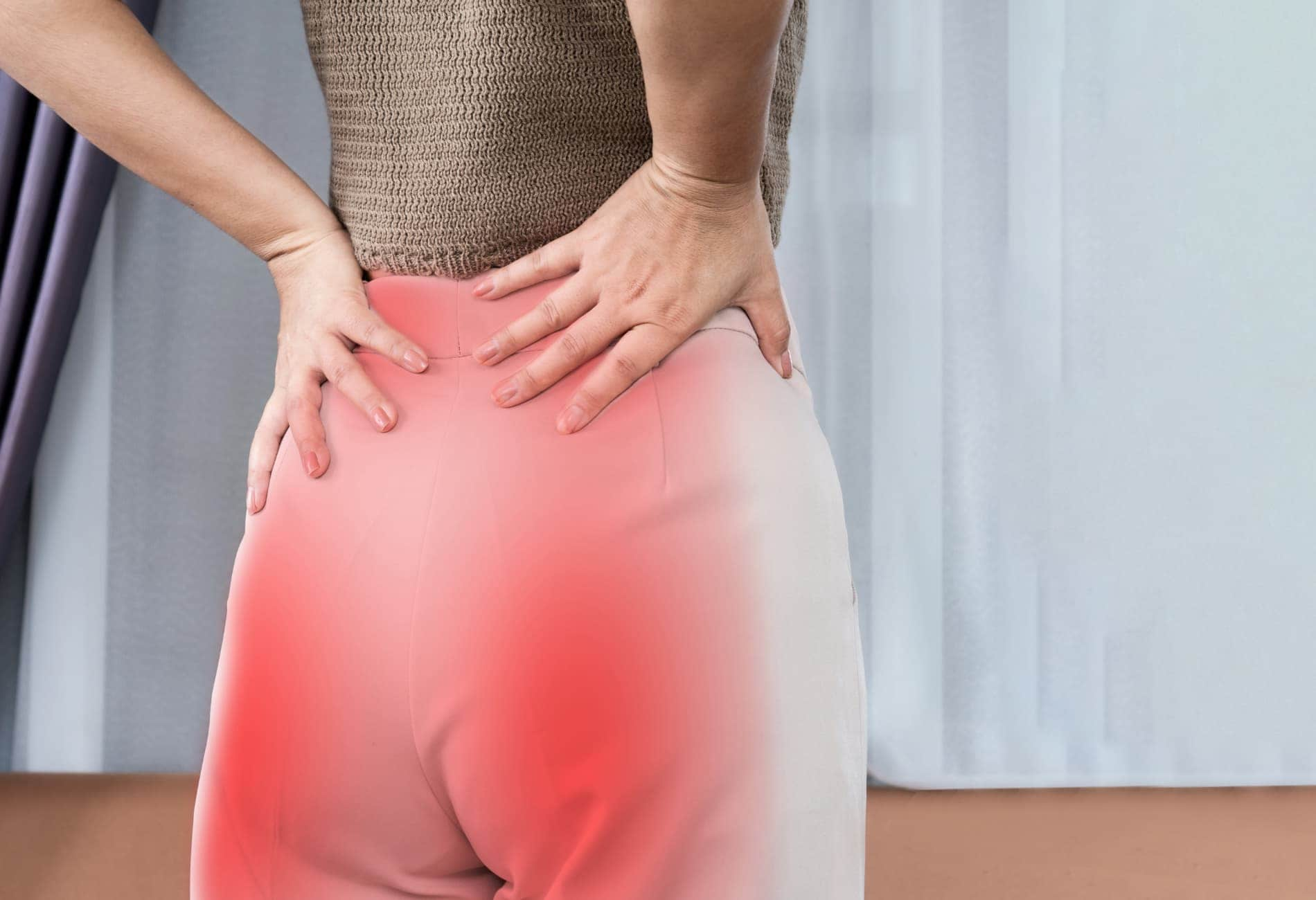
Butt Acne—Where It’s Coming From and How to Treat It
Oh, did you just assume acne was something you would kiss goodbye after your teenage years? Think again: Many adults experience breakouts on places other than their face, including their chest, back, and yep, even their butt—especially if they work out frequently. If you fall into this camp, the good news is you’re not alone, and there are steps you can take to treat and prevent breakouts on your backside (without giving up your fitness routine).
Board-certified dermatologist Deidre Hooper, M.D., sees patients with these pesky blemishes all the time. “Many patients often won’t mention them until I find them during a full-body skin check because they’re too embarrassed,” she says.
Why, oh
why must they exist?
According to Hooper, one of the biggest causes of butt breakouts is staying in sweaty activewear long after you’ve finished your workout. Since sweat is warm and wet, it promotes the growth of bacteria and yeast on your clothes, which, combined with the tightness of the garment, causes friction to irritate the root of hair covering parts of your body such as your backside. (Gross.)
(Gross.)
The combination of an irritated hair follicle with friction often leads to it becoming more inflamed, ultimately resulting in breakouts. This condition is called folliculitis, and it’s actually very common on body parts like the buttocks and back.
“Many people love to live in their workout clothes and get errands done immediately after exercising,” Hooper says. “But the best thing to do to prevent these breakouts is to shower right away to rinse off excess bacteria and then change into clean clothes immediately after working out.”
There’s also hope for treating existing booty bumps.
Believe it or not, most over-the-counter products aimed at treating breakouts on your face are just as safe to use on other parts of your body, Hooper says.
“A topical antibiotic prescription or an over-the-counter salicylic acid leave-on cream can help to soothe the skin, prevent overgrowth and calm inflammation,” she says. “Similarly, a benzoyl peroxide wash, such as PanOxyl or Proactiv, can limit bacteria already present on the body.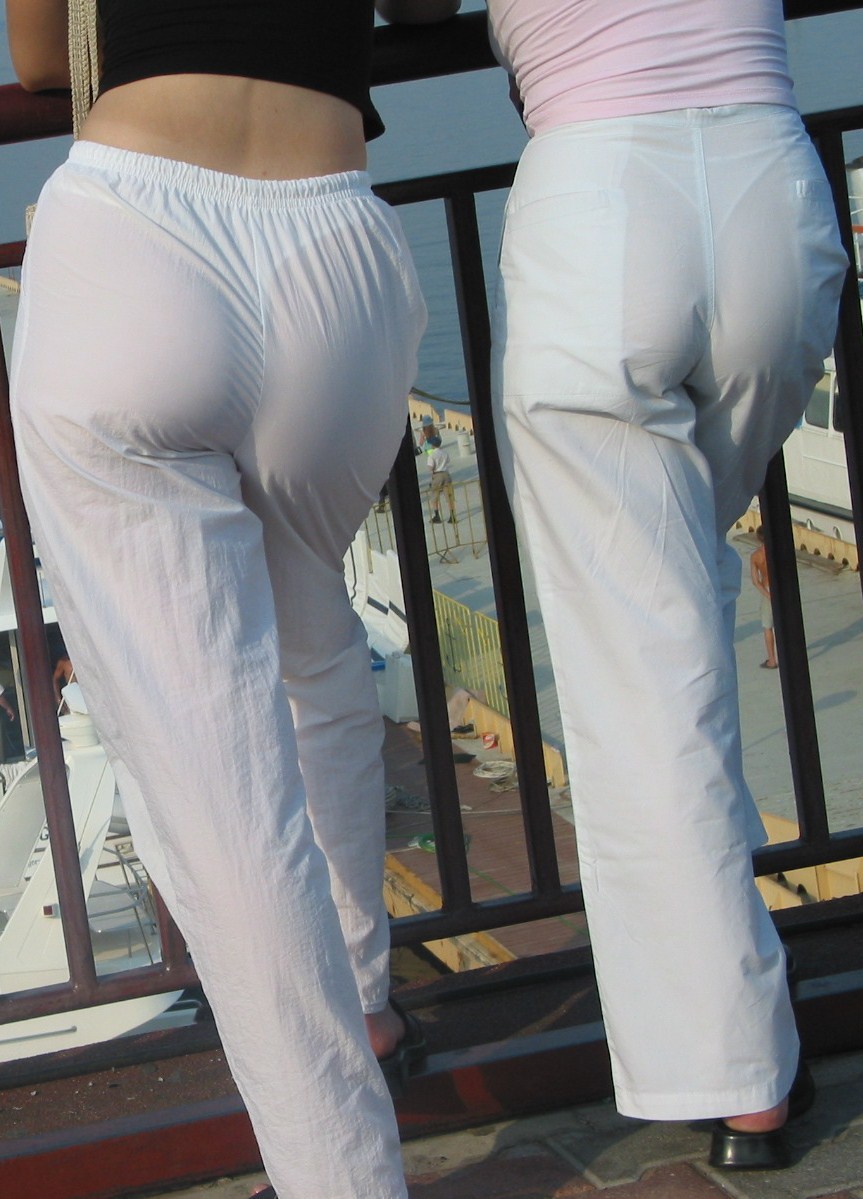
“Gentle versions of acne-fighting cleansers are a good option to avoid irritating and drying out the skin. Some people even have success with anti-dandruff shampoo because of its anti-yeast ingredients.”
But the same can’t be said for all prescription products.
Clinical assistant professor of dermatology at the USC Keck School of Medicine Nada Elbuluk, M.D., adds that while many over-the-counter products can effectively treat mild cases of acne on your backside, the same is not necessarily the case for all prescription products you may be using on your face.
“Retinoid treatments are one example of a product you wouldn’t want to use on other areas of your body because it would likely be way too harsh and irritating,” she says.
And scrubbing with that shower loofah is definitely not a good idea.
You may have also considered exfoliating your butt with a scrub, but experts say to proceed with caution with existing breakouts, as doing this can cause pigmentation and further irritation.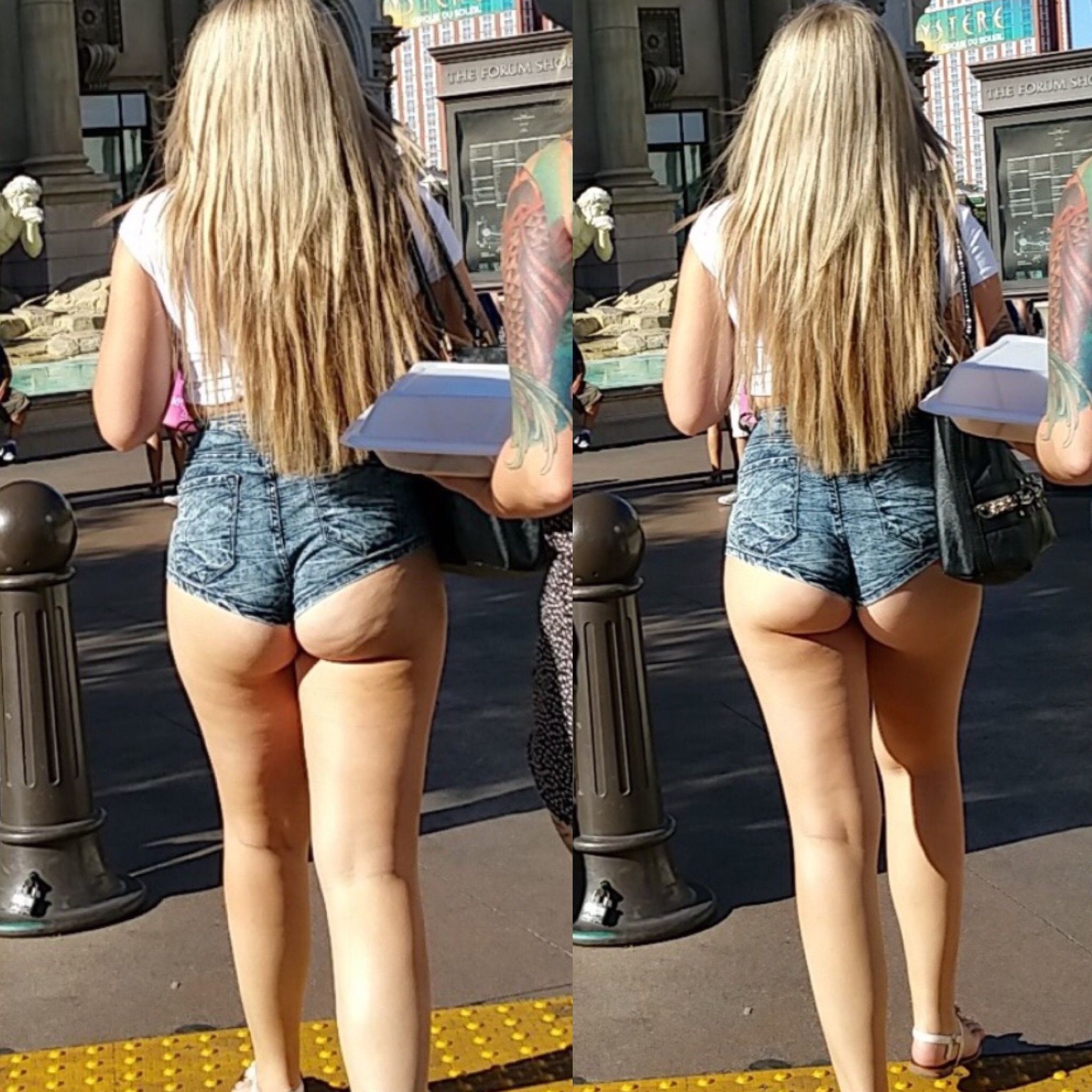
“Gentle exfoliation with a product containing salicylic acid can help to prevent acne, but once the acne is actually there, exfoliating can just make the skin more irritated and inflamed,” Elbuluk says.
“Physical exfoliants and scrubs can help smooth bumpy skin, but if you’re prone to hyperpigmentation or if you notice worse redness after exfoliating, switch to a skin-smoothing chemical exfoliant containing hydroxy acids, such as AmLactin,” Hooper says.
In some cases, what you wear
is what matters.
Other possible causes of body breakouts could be an irritating fabric or a chemical or dye in the clothing. Although cotton is often recommended for everyday clothing, when it comes to working out, Hooper recommends sticking to sweat-wicking and dry-fit fabrics, including underwear, especially if you live in a hot and humid climate. These fabrics can help to release and evaporate sweat so it’s not sitting on your skin as long as it otherwise might.
“Keep in mind that this won’t solve the problem of friction promoting the growth and trapping of bacteria and yeast, so you should still be sure to change out of them immediately after working out,” Hooper says.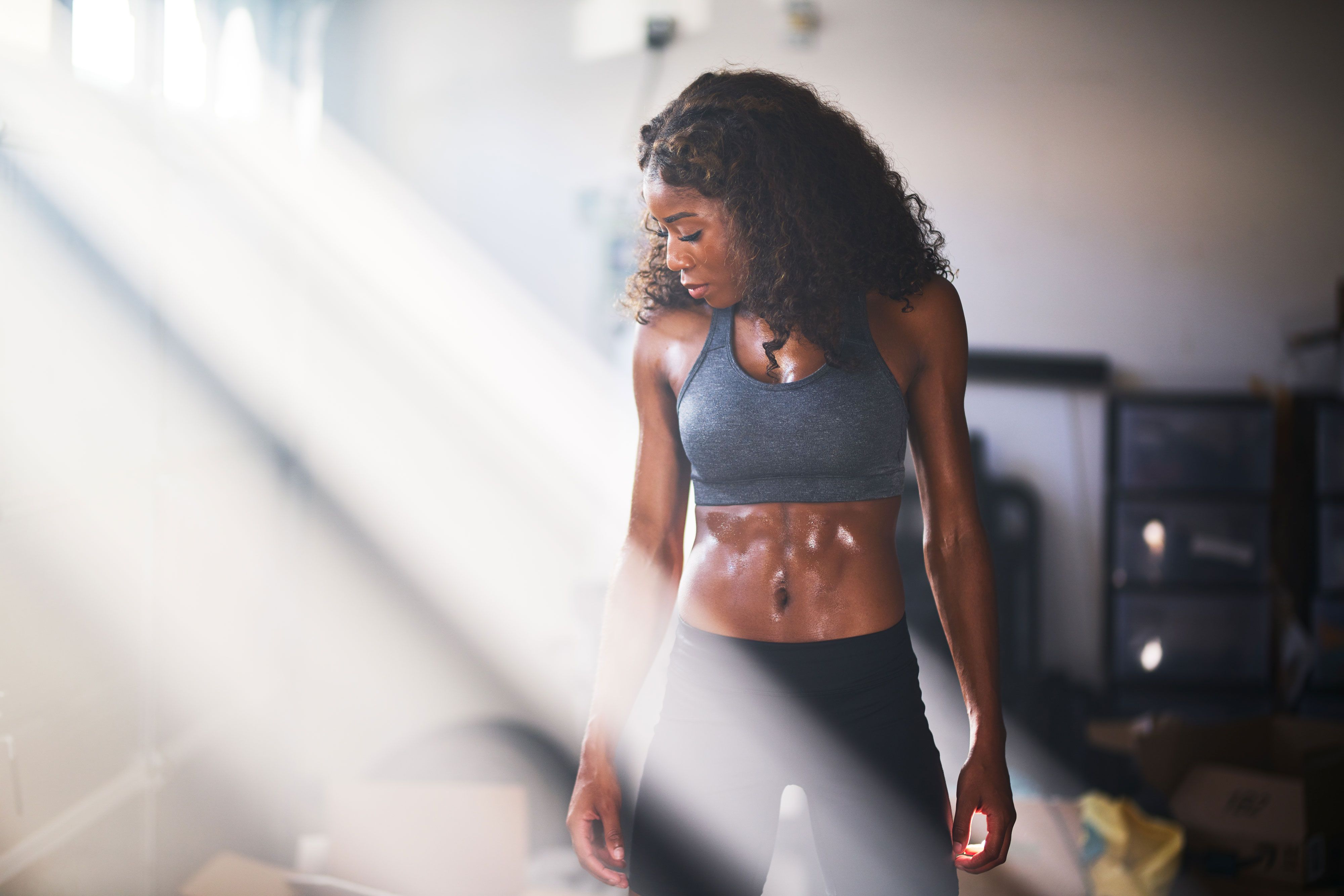
Another potential breakout trigger could be a fragrance or preservative in the laundry detergent you’re using. If you have sensitive skin, Hooper advises switching to a fragrance- or allergen-free version. Some gym-clothes-specific detergents like this one from Vapor Fresh are free of dyes, fragrances, brighteners, and softeners, which can help avoid irritation.
Still can’t seem to beat this literal pain in the butt?
Know that the golden rule of blemishes applies to your derriere too. “Don’t ever pick at your bumps. These scars tend to last longer than those on the face because the skin on your backside doesn’t heal as quickly, experience as much blood flow, or have as many hair follicles to act as sources for new skin cells,” Hooper says.
And if you’re already doing all of the right things but still feel like your bum is blemish-y, it might be time to wave the white flag and get some help.
“Some people are just more acne-prone than others and may be better off seeking expert advice right away,” Elbuluk says. “If you can tell your breakouts are more severe and you’re already experiencing scarring, visit a dermatologist as soon as possible to ensure you begin an appropriate regimen using an antibiotic cream or ointment in combination with the wash. If your case proves to be more severe, a dermatologist will likely have you start a regimen of oral antibiotics.”
“If you can tell your breakouts are more severe and you’re already experiencing scarring, visit a dermatologist as soon as possible to ensure you begin an appropriate regimen using an antibiotic cream or ointment in combination with the wash. If your case proves to be more severe, a dermatologist will likely have you start a regimen of oral antibiotics.”
Emilia Benton is a freelance writer and editor based in Houston, TX. An avid runner, she has finished nine marathons (and a couple dozen half-marathons). She also enjoys country music, baking, and traveling.
What You Need to Know & You’re Too Afraid to Ask– Ejis
Okay, let’s face it, there’s no delicate way to talk about butt sweat. It keeps you awake at night, worrying about what the weather will be like at tomorrow’s baseball game. It has you avoiding the dance floor even though you know you can bust a move. You’ll play a power round of golf with the boys but be very nervous about the color of your shorts. You dread being stuck in a muggy conference room for hours in fear you’ll stand and look like you had an accident.
You dread being stuck in a muggy conference room for hours in fear you’ll stand and look like you had an accident.
In other words, whether it’s hot or not, “swamp butt” is one of those embarrassing, uncomfortable issues that you don’t want to talk about – or ask about.
When you’re dealing with sweat in an area where ventilation is not at a premium, you’re bound to get accumulate moisture in the heat of the moment. However, excessive moisture that seeps through your clothes can be embarrassing.
If you are suffering from a swampy seat, we’ve got you covered with our ultimate guide on butt sweat. You’ll learn what makes your butt sweat, when to talk to your doctor about your sweaty butt (and other medical issues), and how to prevent or stop butt sweat.
What follows are tips and tricks to help you manage (or hide) your butt sweat.
- Medical Options for How to Stop Butt Sweat
- Diet and Lifestyle Adjustments to Prevent Butt Sweat
- Keep Calm and Carry On
- Stop Butt Sweat the Natural Way
- Butt Sweat Don’ts
- Butt Sweat Do’s
- Fashion Sense for Butt Sweaters
- Add a Layer of Protection with Sweat Proof Underwear
This post was published in July 2019, and updated in April 2020, February 2021 and June 2022 so you’re all set for the summer season this year.
Why Does My Butt Sweat So Much?
If you’re wondering embarrassing questions like “why does my butt sweat so much,” you’re not alone – many people struggle with this experience and don’t understand sweaty bum causes.
The reality is that your butt is an area where the sun doesn’t shine, and the air doesn’t flow either. You’ve got two areas here that can cause sweat. There are your butt cheeks, and then you’ve got your perineal area, which is the spot between your legs from your butt to your genitals. This just happens to be one of those spots that tend to sweat more than other areas. Combine that with the fact it’s close quarters down there, and your sweat glands are begging for air.
You’ve got two types of glands that produce sweat:
- Eccrine glands, which secrete odorless water and salt to keep you cool when you are hot.
- Apocrine glands, which produce a thicker secretion that unfortunately stinks.
So, your butt cheeks have the non-stinky glands, while the apocrine glands in the perineal area produce the thicker, smellier sweat. You may also have sweat dripping down your back, causing an even swampier mess in your nether regions. Although everyone sweats, not everyone sweats excessively.
You may also have sweat dripping down your back, causing an even swampier mess in your nether regions. Although everyone sweats, not everyone sweats excessively.
If this sounds like a scenario that’s uncomfortably familiar, there is a chance you might have hyperhidrosis.
What is Hyperhidrosis?
When you suffer from excessive sweating, you could have a condition called hyperhidrosis. The condition causes you to continuously produce sweat, regardless of the temperature, or your level of physical activity.
Sweating is not only normal but also serves an important job to help keep us from overheating. The water and salt produced when sweating cools the skin as it evaporates. However, when you are sweating to the point of dripping all the time, this is not normal sweat gland function.
When sweating becomes so excessive that it looks like you peed your pants, then chances are you have hyperhidrosis.
Sweat in Confined Spaces
It makes sense that confined areas of the body, such as the butt crack, provide an ideal spot for sweating.:max_bytes(150000):strip_icc():focal(999x666:1001x668)/gettyimages-686772659-2000-fcb36be17aa442dab3e0c78d8183a400.jpg) Between two rather confining buttocks, the sweat gets stuck there, creating a myriad of issues.
Between two rather confining buttocks, the sweat gets stuck there, creating a myriad of issues.
With all that sweat, you can develop more than just wet shorts and leaving sweat on chairs. Adding fuel to the fire, when your butt crack is always sweaty, you’re creating a factory primed to produce a whole lot of woes. We are talking serious overgrowth of bacteria and yeast, the main culprits that cause intense itching. You can also develop rashes and infections.
Some of the common issues caused by butt sweat include:
- Heat rash: A very itchy red rash that can look a lot like blisters, but mostly red bumps.
- Intertrigo: An inflammation that is caused by skin friction and can become very irritable and uncomfortable.
- Acne: Sweating can aggravate skin prone to acne.
- Folliculitis: Infected hair follicles caused by friction.
- Candida: A very itchy fungus caused by yeast, which can spread.

- Skin maceration: This is that wrinkly skin associated with long baths or swimming. It usually goes away, but when the skin remains wet, it can remain macerated, which in turn can lead to infections.
All these conditions can have you tugging at your shorts in a desperate attempt to relieve the itch.
When to Talk to Your Doctor about Butt Sweat
Should you see the doctor for a sweaty butt? Well, yes. If you are sweating to excess, you could have hyperhidrosis, but there are also other underlying health issues that could be causing it. You want to rule out anything serious while finding out if anything can be done to help with your issues.
For example, some underlying health issues could include:
- Thyroid problems
- Diabetes
- Infections
- Nervous system disorders
- Certain types of cancer
- Use of certain medications
With these conditions, you probably have some other symptoms as well, but that’s why you’re visiting the doctor. During your visit, you can discuss your overall health and if needed, your doctor will evaluate other symptoms if he or she suspects it could be more than hyperhidrosis.
During your visit, you can discuss your overall health and if needed, your doctor will evaluate other symptoms if he or she suspects it could be more than hyperhidrosis.
You also want to speak to your doctor if you are experiencing other issues down there, including:
- Redness
- Warmth
- Swelling
- Pain
- Itching
- Skin discolorations (which admittedly are hard to spot!)
Any skin challenges or infections should really be taken care of right away, as all that dampness will just make matters worse.
Medical Options for How to Stop Butt Sweat
If it turns out that you are suffering from excessive sweating, or hyperhidrosis, there are medical treatments you can discuss with your doctor. These may help with how to stop butt sweat and they include:
- Prescription antiperspirant: Prescription strength antiperspirants contain a higher concentration of the active ingredient aluminum chloride.
 Antiperspirant should not be applied to the butt crack or perineal area. Before using, discuss application techniques with your doctor.
Antiperspirant should not be applied to the butt crack or perineal area. Before using, discuss application techniques with your doctor. - Anticholinergic drugs (Nerve-blocking medications): This is an oral medication that blocks the chemicals in your body that cause sweating. They have some pretty annoying and even dangerous side effects, including heart palpitations, blurred vision, dry mouth, and bladder issues.
- Antidepressants: These medications can both reduce the anxiety of excessive sweating, which can help in decreasing sweat.
- Botulinum toxin (Botox) injections: It can block sweat, but not all doctors are willing to provide this treatment in this area of the body, as it is most commonly used in the underarms and feet.
Although there are also medical procedures available for different areas of the body affected by hyperhidrosis symptoms, none of them are currently recommended in the groin area.
Diet and Lifestyle Adjustments to Prevent Butt Sweat
If meds aren’t your style, or your doctor does not feel they will be effective for you, these lifestyle changes can also help stop butt sweat. Not only will they reduce sweat, but many of them are also going to help you lose weight and enjoy improved health. The less weight you carry, and the healthier you are, the less you will sweat.
- Avoid spicy foods because they increase sweating.
- Avoid raw onions and excess amounts of garlic because they can make sweat smell worse.
- Avoid deep-fried, fatty, and processed foods.
- Choose a low carb diet.
- Avoid caffeine as it is a stimulant that triggers your sweat glands.
- Drink 8 to 13 cups of water a day to stay cool and avoid dehydration, which intensifies sweating.
- Eat digestion-friendly foods such as celery, spinach, cucumbers, watermelon, lettuce, olive oil, bell peppers, and grapefruit.
- Take a Vitamin B supplement to keep your vital systems and organs functioning properly.

- Drink wheatgrass juice (if you can stand it).
- Avoid smoking and drinking (if you can stand it).
- Eat less salt as your body sweats to flush salt from your system.
Keep Calm and Carry On
As mentioned, stress adds to excessive sweating. Finding ways to reduce stress in your life will help. You can try:
- Breathing: Deep breathing exercises allow you to control negative emotions and reduce stress-related sweat. When you are faced with a stressful situation, take a few calming, slow deep breaths by breathing in through your nose, holding it for three seconds, and then exhaling calmly through your mouth.
- Meditate: Meditation techniques help teach mindfulness, so you don’t overthink things, and instead remain in the moment. It helps reduce anxiety and will also improve focus.
- Exercise: In addition to lowering the stress hormone cortisol, regular exercise will help you shed the pounds that increase sweat production.
 Exercising improves your attitude by releasing your natural feel-good endorphins. It can be as simple as walking every day, but you can get a good workout shooting hoops with your buddies, playing some touch football, or riding a bike. Choose what you love to make it easier to stay active.
Exercising improves your attitude by releasing your natural feel-good endorphins. It can be as simple as walking every day, but you can get a good workout shooting hoops with your buddies, playing some touch football, or riding a bike. Choose what you love to make it easier to stay active.
Stop Butt Sweat the Natural Way
More and more people are looking for natural ways to manage their health. If this sounds like you (or if other things aren’t working for you), try some of these home remedies:
- Apple Cider Vinegar: This is a natural astringent that controls sweat and reduces bacteria. Apply it with a cotton pad but be aware of potential irritation due to the sensitive area where you are applying it. If you experience irritation, stop using it. You might want to try this on the weekend so you can wash it off if it irritates your skin.
- Sage and Black Tea: If the vinegar proves too astringent, teas are a great option.
 They contain tannic acid, which works the same way as the astringent effects of vinegar by constricting and shrinking pores. Tea reduces sweat but also kills bacteria. You can apply it directly using the tea bags steeped in boiling water. Just make sure you let it cool first.
They contain tannic acid, which works the same way as the astringent effects of vinegar by constricting and shrinking pores. Tea reduces sweat but also kills bacteria. You can apply it directly using the tea bags steeped in boiling water. Just make sure you let it cool first. - Baking Soda: This can be used much like powders to absorb sweat and block odors. It won’t stop you from sweating but might keep you more comfortable.
- Chamomile Tea: Instead of applying it to your skin, you can drink chamomile tea to reduce sweat-causing stress and anxiety.
- Witch Hazel: This is another natural astringent, which can be applied with a cotton pad. In this case, let it sit on your skin for 30 minutes and then wash it off.
- Shaving: Shaving as much of the area as possible can help you to avoid the hair capturing and trapping the sweat.
When applying anything to your skin, always test it in small areas to make sure it doesn’t sting or cause irritation.
Butt Sweat Don’ts
One of the first and best ways to combat butt sweat is to learn what not to do if you want to keep the sweat to a minimum. Here’s what you should avoid doing, no matter what:
- Wearing leather pants: Okay, this is probably a stretch for most guys, but if you’re a fan of leather pants, then we are talking to you. Although leather is a natural fabric, it doesn’t breathe, which means neither can your butt. So, leave them at the back of your closet or pass them on to a leather-loving friend.
- Choosing a leather seat: It might be tempting to buy a leather couch or comfy chair for a masculine home décor. But as with leather pants, a leather couch won’t help that swampy bottom. Whether you’re at a high-end night club, or choosing a chair for work, never make a beeline for the leather whenever possible.
- Wearing unbreathable fabrics: Like leather, non-breathable pants made from synthetic fabrics, such as acrylic, polyester, rayon, acetate, and nylon, do nothing but smother your butt.
 They not only cause you to sweat but also keep in all that dampness.
They not only cause you to sweat but also keep in all that dampness. - Using deodorant: This might seem counterintuitive, but you should not be using antiperspirants or deodorants in the butt crack. They are highly irritable, and something your delicate skin will not take to kindly.
- Hanging out in a wet swimsuit: It might be tempting to slip out of the cool water and lounge poolside, or on that sandy beach, but that soggy bottom is going to aggravate your swampy butt. Soggy plus sweaty equals fungal infections and rashes. Always dry off completely following any water-related activities.
- Sitting too long: Although sometimes it can’t be avoided, sitting for long periods can lead to a sweatier butt. Whether you’re in class, at work, in a conference or on a long flight, take a break. If there’s a chance to stretch your legs (and air out your bottom region), do it.
If you’re looking for other ways to prevent butt sweat, we’ve got you covered.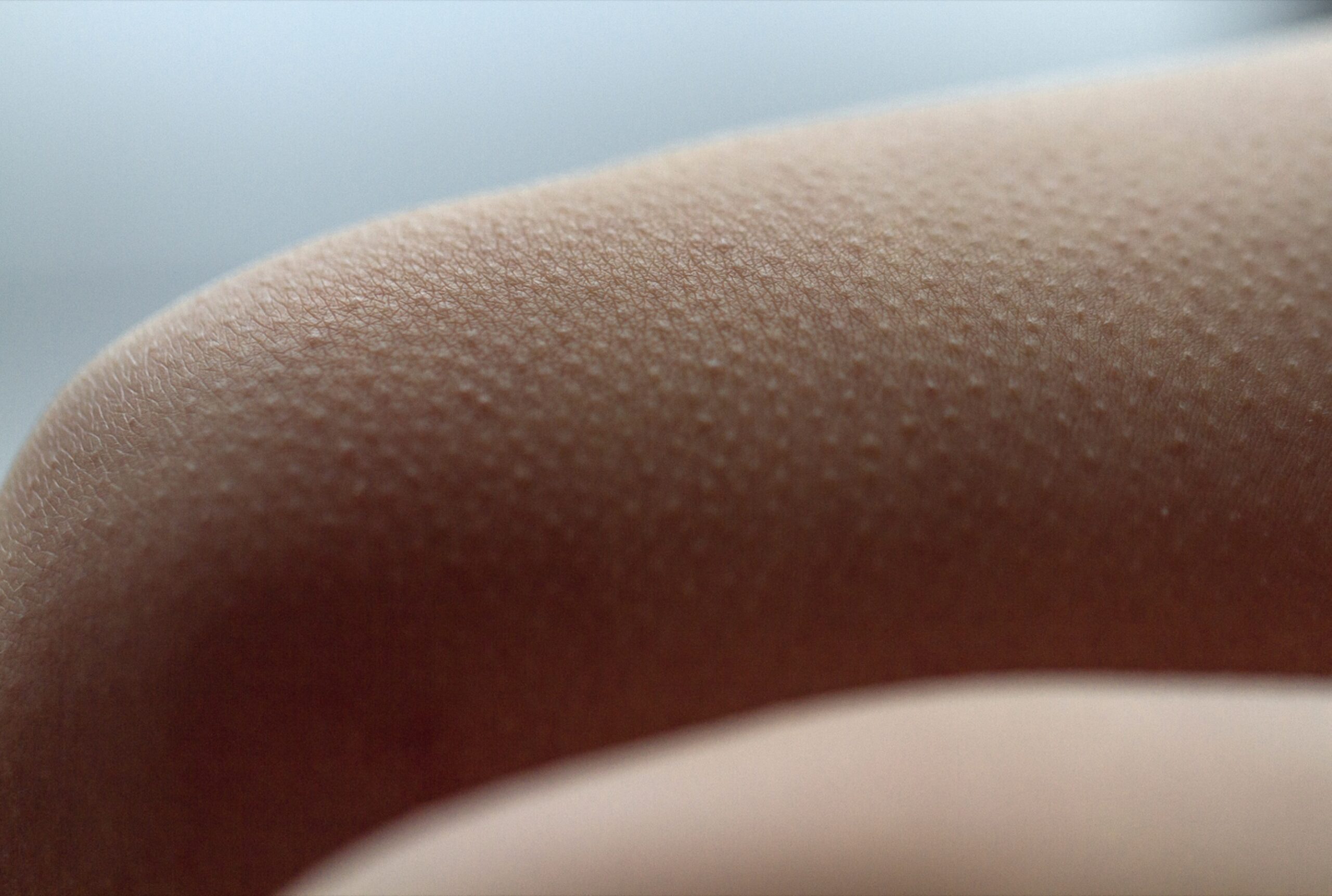
Butt Sweat Do’s
If you aren’t having luck with the treatments available, try out these tips to make living with butt sweat easier.
Always Be Packing
Bring extra clothing and underwear wherever you go. This way, you can change when things get a little too swampy for comfort, or worse, your sweat leaks through your pants. Your “go” kit should include pants, sweat proof underwear (buy in our shop or on Amazon), baby wipes, and powder. You can wipe everything away with baby wipes, make sure you are thoroughly dry, and then apply some powder before changing into your fresh clothes.
Locate the Restrooms
Find out the bathroom locations wherever you go so that you can navigate quickly in case of a “squishy tushy.” This will make it easier to change or wipe yourself down in a sweaty emergency. It will also help prevent a panic attack and lessen anxiety as you’ll have a plan of action.
Never Scrub and Rub
Because moisture in the nether regions is so irritating, never scrub and rub when drying off. Always pat gently to remove sweat, starting with a damp paper towel. The damp towel removes the sweat while helping to avoid friction. You can then use dry paper towels to pat dry the area completely.
Always pat gently to remove sweat, starting with a damp paper towel. The damp towel removes the sweat while helping to avoid friction. You can then use dry paper towels to pat dry the area completely.
Keep It Moving
As mentioned, when you sit for too long, you are contributing to the perfect storm. Your butt crack is like a “canal” for sweat to trickle down and land in a pool at your butt cheeks. By moving around more often, you help avoid the sweat from pooling to create those embarrassing wet butt stains.
Pamper with Powder
There’s a reason mothers have used baby powder for centuries to help little bums avoid diaper rash. Just a light dusting on the cheeks helps absorb moisture and reduces friction, which causes rashes. Always choose corn-starch-based powders as talc is tied to some forms of cancer.
If you experience pain or itching, instead choose a medicated powder such as Anti Monkey Butt Powder, Zeasorb Excess Moisture Powder, or trusted Gold Bond Ultimate Body Powder.
Fashion Sense for Butt Sweaters
We’ve already provided some basics for clothing to help you avoid swampy butt. However, you also want to look good while doing so. Because your clothing choices can add to your sweaty woes, try out these fashion tips:
Choose Cotton
Cotton is a butt sweater’s best friend, which is why it is often used in athletic wear. This is an excellent option when you hit the gym as it wicks away moisture. Because it’s so versatile, you can also choose cotton clothing for nearly any other event or function.
Love Linen
Linen is nature’s other breathable fabric, which tends to come in looser weaves. It helps keep you cool in hot weather and is the material of choice in warmer climes around the world. Keep in mind that it tends to wrinkle. Another natural fabric option is hemp, which is becoming more mainstream. It helps keep air flowing to protect your skin.
Light Layers
Wearing layers might seem like the complete opposite of what you should do to avoid sweating, but it will help absorb excess sweat.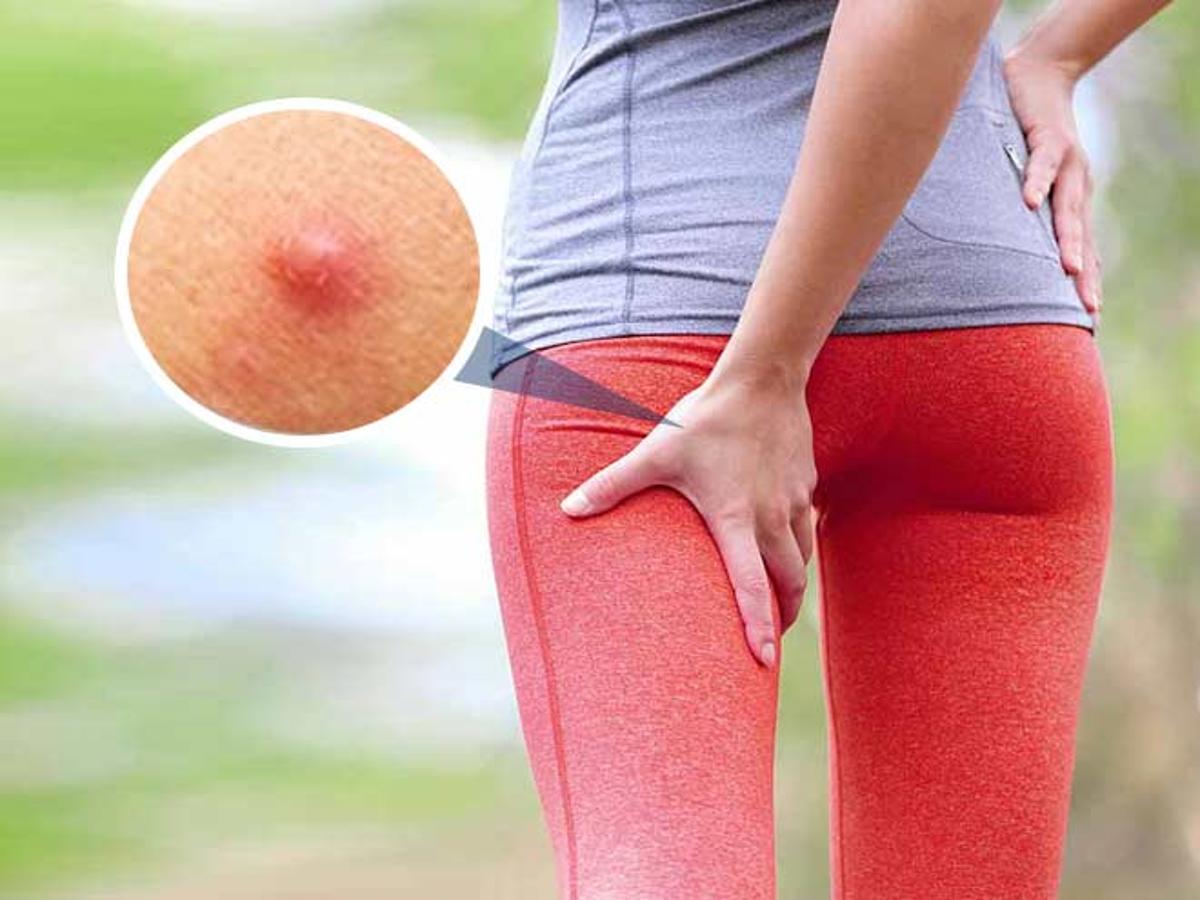 Layer your shirt with a 100% cotton undershirt or an Ejis sweat proof undershirt (buy in our shop or on Amazon) with back and underarm protection. Remember a lot of that butt sweat can be trickling down your back or even from your pits. So, if you choose a comfortable undershirt, it will help keep everything drier.
Layer your shirt with a 100% cotton undershirt or an Ejis sweat proof undershirt (buy in our shop or on Amazon) with back and underarm protection. Remember a lot of that butt sweat can be trickling down your back or even from your pits. So, if you choose a comfortable undershirt, it will help keep everything drier.
Color Smart
Choose darker colored pants to avoid the stains and marks from being noticeable if you do sweat through.
Hang Loose
In hand with your snug-fitting undershirts, choose looser fitting pants and shirts. They allow you to have better airflow and also keep the fabric away from your skin. Always aim for a perfect fit at the waist and enough length. In other words, avoid skin-tight, short shorts, and baggy, sagging pants.
Add a Layer of Protection with Sweat Proof Underwear
Ejis sweat proof boxer briefs (buy in our shop or on Amazon) and are designed specifically for people with extensive butt sweat issues. We use premium, comfortable micro modal fabrics in combination with odor-fighting silver and an ultra-thin waterproof layer to protect the backs of your legs, your crotch, and of course, your butt.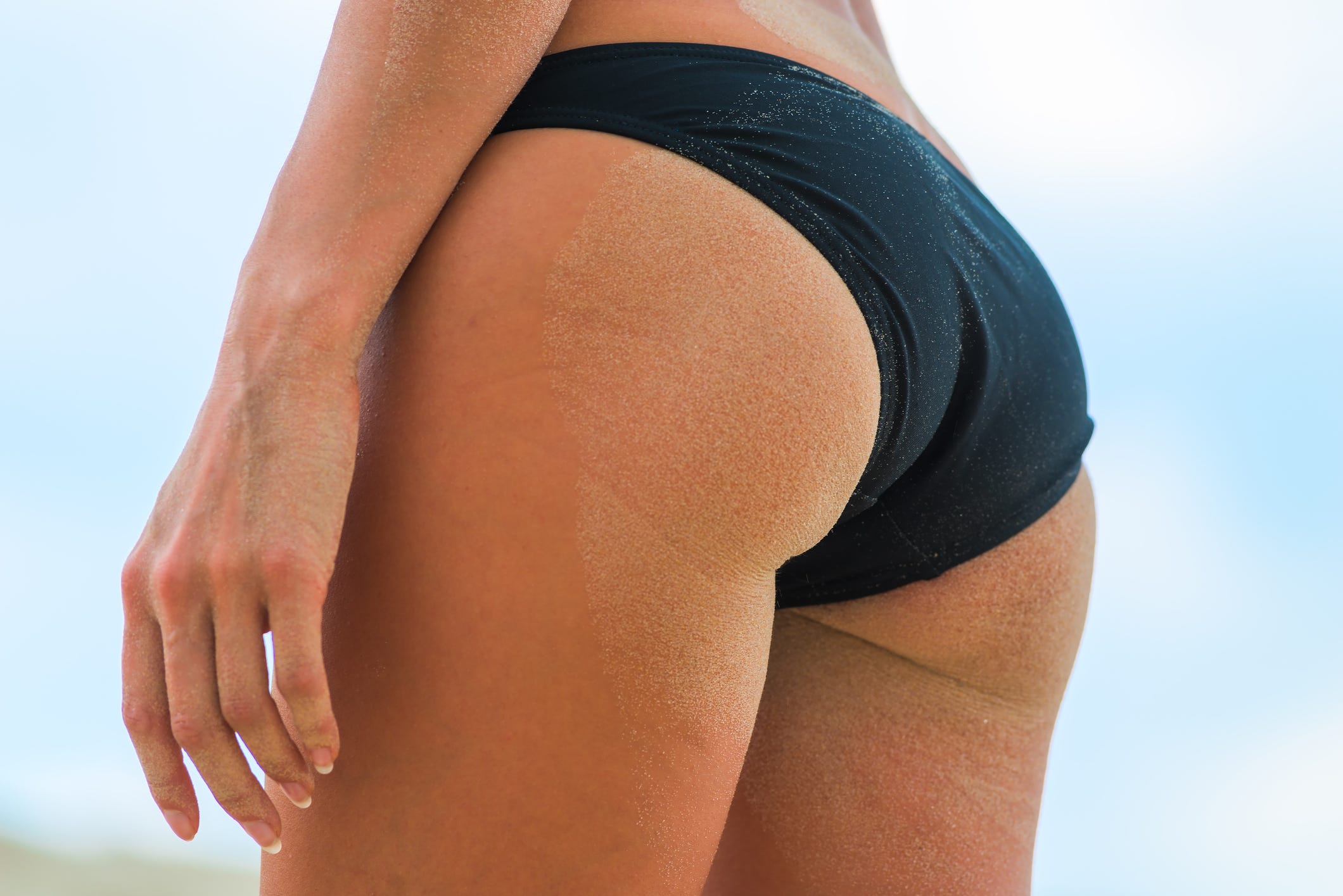
Quality sweat proof boxer briefs help you enjoy a drier, more comfortable day. This is your number one line of defense against butt sweat, whether you are facing the summer heat, watching a major league ball game, in it for the long haul at a day-long, sit-down conference, or being the best man at your brother’s outdoor wedding.
Although excessive sweating can be miserable, use the suggestions in this guide to help you go through life with a drier, happier, and even healthier butt.
Effective remedies for resolving injection bumps: proven methods
Contents
- 1 How injection bumps resolve: effective methods and remedies
- 1.1 What are injection bumps and why do they occur?
- 1.2 Problems caused by injection bumps
- 1.3 What products help dissolve injection bumps?
- 1.4 Active Ingredients in Absorbable Injections
- 1.5 How to properly use the Injection Absorbers?
- 1.6 Benefits of using light therapy for resorption of injection bumps
- 1.
 7 Effect of massage and physiotherapy on resorption of injection bumps
7 Effect of massage and physiotherapy on resorption of injection bumps - 1.8 Speeding up the resolution of injection bumps with diet and clay masks
- 1.8. 1 Diet
- 1.8.2 Clay masks
- 1.9 Folk ways to quickly dissolve bumps from injections
- 1.10 How to prevent the appearance of bumps from injections?
- 1.11 When is it important to see a doctor if you get bumps from injections?
- 1.11.1 When new bumps appear
- 1.11.2 When pain increases
- 1.11.3 When symptoms of poisoning appear
- 1.11.4 When side effects appear
- 1.1 2 Related videos:
- 1.13 Q&A :
- 1.13.0.1 What causes a bump after an injection and how can it be avoided?
- 1.13.0.2 What are the means for resorption of bumps from injections?
- 1.13.0.3 Is it possible to avoid a bump after an injection by injecting into the thigh?
- 1.13.0.4 How long do I need to use the bud resorbers?
- 1.
 13.0.5 Are there any contraindications to the use of cone dissolvers?
13.0.5 Are there any contraindications to the use of cone dissolvers? - 1.13.0.6 What should I do if the bump from the injection does not go away for a long time?
Learn how to dissolve the bumps formed at the injection sites. Effective methods and means will help get rid of unpleasant consequences. Read the article on our website.
Injections are an important part of health care. However, injections do not always go smoothly and well for the body, sometimes injections leave marks that can result in inflammation, bumps and various types of infections.
Various remedies come to the rescue, which help to dissolve the bumps from injections. Most of them are folk methods, and some are pharmacological preparations. In this article, you will learn about effective ways to get rid of bumps that have been tested by time and for reliability.
Injection can cause bumps in both adults and children. This may be due to various factors, such as too rapid insertion, sterility or quality of the needle, incorrect injection site.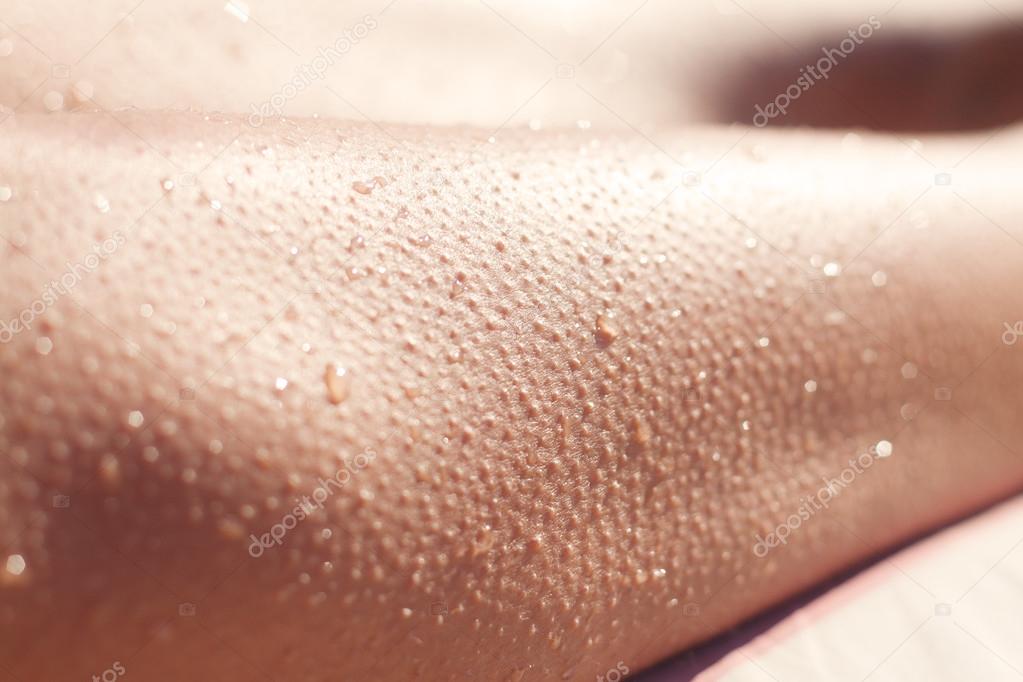 The good news is that most bumps resolve on their own within 3-4 weeks.
The good news is that most bumps resolve on their own within 3-4 weeks.
But self-permission is not always enough, especially if bumps further prevent you from leading a normal life.
What are injection bumps and why do they occur?
Bumps from injections are not uncommon after injections. This is a formation on the skin, which can have different sizes and depths. They can be painful or painless, temporary or permanent.
The cause of the bumps from injections is a violation of the process of introducing the drug into the body. It may also be due to the individual characteristics of each organism. Some people are prone to such formations, regardless of who gives the injections – a medical professional or the patient himself.
Bumps from injections usually occur due to several reasons:
- Incorrect insertion of the needle into the skin
- Incorrect technique for administering the drug
- Using blunt needles
- Choosing the wrong length or diameter a needles
- Violations of the rules for the preparation of medicines
It is important to note that bumps from injections can also be the result of other problems: the likelihood of unpleasant symptoms is high with increased sensitivity to pain, increased bleeding, or the presence of skin diseases.
Problems caused by injection bumps
Swelling and soreness
The most common problem caused by injection bumps is tissue swelling and tenderness at the injection site. It is due to the fact that when injected into the skin, microscopic drops of blood or a drug can enter the surrounding tissues, causing their irritation and swelling.
Infection
If the injection site was not treated with an antiseptic or the needle was of poor quality, then an infection is possible. At the injection site, itching, redness, and even an abscess may appear. In some cases, antibiotic treatment may be required.
Impaired blood flow
Bumps caused by injections can lead to impaired blood flow to surrounding tissues. This can cause soreness, numbness, and in some cases even lead to the development of a blood clot.
Cosmetic problems
Prick bumps can cause cosmetic problems.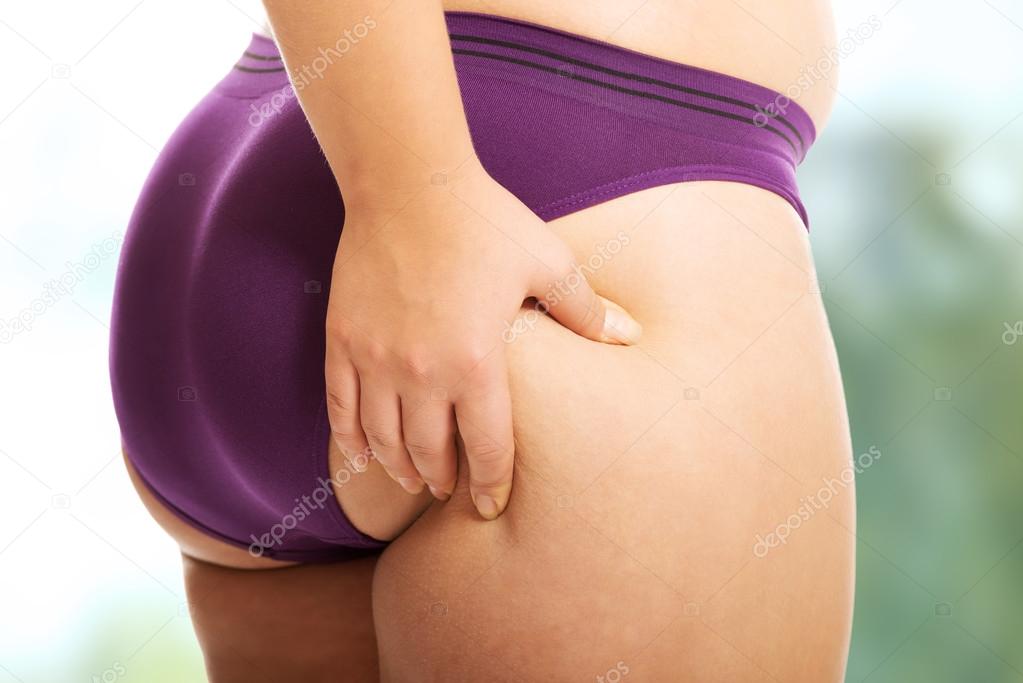 A scar, dark skin patch, or spot may remain at the injection site. To prevent these problems, cleanliness and treatment of the injection site should be observed.
A scar, dark skin patch, or spot may remain at the injection site. To prevent these problems, cleanliness and treatment of the injection site should be observed.
- Bumps from injections can lead to problems ranging from swelling and soreness to cosmetic problems.
- To prevent problems with bumps from injections, it is necessary to keep clean and treat the injection site with an antiseptic.
What products help to dissolve the bumps from injections?
Prick bumps can cause a variety of problems such as soreness, redness, and sometimes even restriction of movement. There are various effective ways to help dissolve these bumps.
- Application of cold. An ice compress is applied directly to the injection site. It helps reduce swelling and reduces pain.
- Application of heat. Heat compresses can also help reduce swelling and help the bump resolve faster. To do this, you can use hot water, dry heat or a heating pad.
- Medicines.
 There are special ointments, gels and creams that can speed up the resorption of the bumps and reduce soreness. They may contain various active ingredients such as heparin and troxerutin.
There are special ointments, gels and creams that can speed up the resorption of the bumps and reduce soreness. They may contain various active ingredients such as heparin and troxerutin. - Physical exercise. They are able to improve blood flow and speed up the process of resorption of the bumps. Certain exercises, such as light massage or stretching, can also help.
When choosing a remedy for resorption of a bump from an injection, it is necessary to take into account the individual characteristics of the body and follow the doctor’s recommendations.
Active Ingredients in Absorbable Injections
Absorbable Injections contain active ingredients that accelerate the resorption of bumps. One of the main active ingredients are heparin and hyaluronidase.
Heparin is an anticoagulant that thins the blood. It prevents the formation of blood clots, which can aggravate the bump from the injection. Heparin also helps to increase the permeability of intercellular spaces and increase blood circulation in the injection area.
Hyaluronidase is an enzyme that breaks down the intermolecular bonds of hyaluronic acid found in tissues. This reduces the thickness and viscosity of these tissues, increases their permeability and facilitates the removal of slag substances.
The other active ingredient in stab resorption products is Ledocine . It is used to relieve pain and reduce swelling in the injection area.
Absorbable products may also contain detoxifiers and vitamins that help repair damaged tissues and speed up the process of their resorption.
- Heparin – an anticoagulant that accelerates blood circulation in the injection area
- Hyaluronidase – an enzyme that destroys tissues and increases their permeability
- Ledocaine – an anesthetic that reduces pain and swelling
How to use the right way to dissolve the bumps from injections?
The first thing you should do when you buy products for resolving bumps from injections is to read the instructions. Each drug has its own characteristics of use, which must be considered. It is important to remember that most products dissolve only small bumps up to 2-3 cm in diameter. If the size of the cone is larger than indicated, then you need to seek help from a specialist.
Each drug has its own characteristics of use, which must be considered. It is important to remember that most products dissolve only small bumps up to 2-3 cm in diameter. If the size of the cone is larger than indicated, then you need to seek help from a specialist.
During the application of the product, it is necessary to monitor the condition of the bump. If it increases or other undesirable effects are observed, you should immediately consult a doctor. In addition, it is necessary to ensure that the product does not get on the mucous membranes of the eyes or mouth.
It is important to remember that injection-bump resorption products are not a substitute for real medical care. They can only help in the case of small bumps that appear after vaccinations or injections. If you notice that after the injection you have a bump that does not resolve for a long time, you need to contact a medical specialist.
Benefits of using light therapy to dissolve bumps from injections
Light therapy is an effective treatment method based on the use of specific wavelengths of light. Due to its non-invasiveness and safety, this method is becoming increasingly popular in the treatment of various diseases, including resorption of bumps from injections.
Due to its non-invasiveness and safety, this method is becoming increasingly popular in the treatment of various diseases, including resorption of bumps from injections.
1. Painless treatment
Light beams do not cause pain, which makes the process of resorption of the bumps more comfortable for the patient. In addition, light therapy does not require the use of drugs, which avoids possible side effects.
2. Highly effective
Studies show that the use of light therapy speeds up the process of resorption of bumps from injections. Due to a certain wavelength of light, there is a stimulation of the cells that are responsible for the elimination of accumulations.
3. No Special Training Required
The light therapy procedure does not require the patient to be specially trained or to use any anesthesia. The patient can continue his normal life immediately after the procedure, without limiting himself in activity.
4. Safety
Although light therapy is an active form of treatment, it is completely safe for the patient.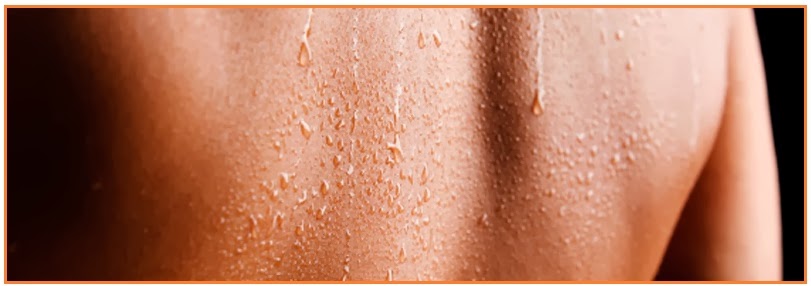 Light therapy has no side effects and does not cause allergic reactions.
Light therapy has no side effects and does not cause allergic reactions.
- The use of light therapy for resorption of bumps from injections allows:
- — Comfortable treatment without pain and side effects;
- – Accelerate the process of eliminating cones;
- — Do not limit yourself in activity after the procedure;
- – Be confident in the safety of the treatment method.
The effect of massage and physiotherapy on the resorption of bumps from injections
Massage and physiotherapy are effective methods of influencing the body in the resorption of bumps from injections. Massage improves blood circulation in the tissues and accelerates the resorption of the hematoma. Physiotherapy also increases local blood flow and stimulates tissue regeneration. When applied correctly and timely, these methods can significantly shorten the recovery period after injections.
Physiotherapy includes various methods such as ultrasound, laser therapy and electrotherapy. Each of them has its own advantages and can be applied depending on the type of injury and its characteristics. For example, ultrasound therapy accelerates blood flow and stimulates the formation of collagen, which accelerates the resorption of the hematoma. Laser therapy can also help in accelerating tissue regeneration and relieving inflammation, while electrotherapy increases local blood flow and speeds up metabolic processes.
Each of them has its own advantages and can be applied depending on the type of injury and its characteristics. For example, ultrasound therapy accelerates blood flow and stimulates the formation of collagen, which accelerates the resorption of the hematoma. Laser therapy can also help in accelerating tissue regeneration and relieving inflammation, while electrotherapy increases local blood flow and speeds up metabolic processes.
The use of massage and physiotherapy for resorption of bumps from injections is an effective and safe way to influence the tissues. However, before using them, you must definitely consult a doctor and undergo an appropriate course of procedures.
Accelerating the resolution of injection bumps with diet and clay masks
Injections can leave bumps on the skin that not only interfere with aesthetic perception, but can also cause pain. To speed up the process of resorption of such cones, you can use a diet and therapeutic clay masks.
Diet
To speed up the process of resorption of bumps from injections, it is recommended to monitor nutrition. It is important to eat foods rich in vitamin K, which helps speed up the resorption of blood clots. These foods include:
It is important to eat foods rich in vitamin K, which helps speed up the resorption of blood clots. These foods include:
- Leafy vegetables (lettuce, spinach, cabbage)
- Broccoli
- Parsley, dill, cilantro
- Garlic
- Soy products (tofu, soy milk)
- Take 2-3 tablespoons of clay
- Add a little water to make a paste
- Add 1-2 drops of essential oil (you can use tea tree, lavender or rosemary oil)
- Apply a mask on the bump and keep 10-15 minutes
- Wash off the rest of the mask with warm water
- Ice Applying ice to the injection site immediately after the procedure will help prevent a bump from forming.
- Soda. Applying a baking soda compress to the injection site will help reduce swelling and the bump will resolve quickly.
- Garlic. Garlic can also be used to eliminate a bump. A chopped clove of garlic should be applied to the injection site and wrapped with a bandage. Garlic will speed up the absorption process.
- Iodine. It is necessary to smear the injection site with iodine so that the bump resolves faster. It’s inexpensive and the performance is great.
- Control the depth of the injection: the shallower you are deep enough, the less chance of bumps. If you are inexperienced, ask a healthcare professional to show you how to inject correctly.
- Massage the injection site: after injection, massage the injection site for several minutes with gentle circular motions – this will help distribute the medicine and reduce the risk of bumps.
- Avoid the same place: If you get injections regularly, do not use the same place on your body. This will help prevent increased tension in the tissues and reduce the chances of bumps.
- Use cold: If you notice that you have a bump, immediately apply ice to the injection site.
 This will help reduce swelling and relieve pain.
This will help reduce swelling and relieve pain.
90 027
Clay masks
Clay has absorbent properties and can accelerate the process of resorption of cones from injections. In addition, clay helps to cleanse the skin and reduce inflammation. To prepare the mask you need:
Clays can be used in different colors: white, green, blue. It is recommended to carry out the procedure 1-2 times a week until the bumps completely disappear.
Folk methods for quick resorption of bumps from injections
After the injection, a bump may appear, which not only causes discomfort, but can also cause pain. There are folk remedies that help to quickly dissolve the bumps and relieve pain.
These folk remedies should be used as soon as possible after the injection.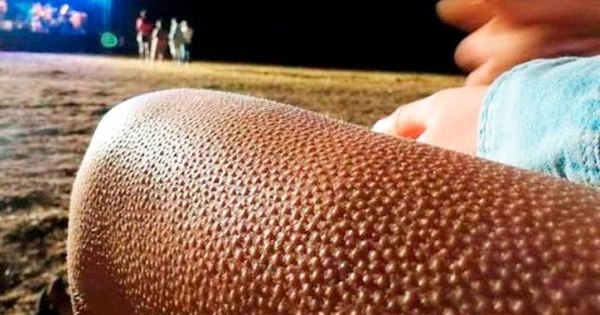 Be careful to repeat the procedure several times a day.
Be careful to repeat the procedure several times a day.
How to prevent bumps from injections?
Bumps from injections can happen to anyone who gets injections. To prevent their occurrence, it is useful to know a few simple tips:
It is important to remember that injection bumps are generally harmless and do not cause major problems. However, if they do not go away after a few days or are painful, contact your doctor.
When is it important to see a doctor if you get bumps from injections?
When new bumps appear
If new bumps appear after injections, this may indicate possible dangerous side effects. If this happens, you should definitely consult a doctor for advice and recommendations.
When pain worsens
If the bumps formed after injections begin to grow in size and cause pain, this may also indicate serious health problems. In this case, you should not wait until the situation worsens, it is better to immediately consult a doctor.
If symptoms of poisoning occur
Sometimes after injections, symptoms of poisoning may occur, such as fever, nausea, vomiting, weakness and dizziness. If at least one of these symptoms is observed, then you should immediately seek medical help.
When side effects occur
Various side effects may occur during injections and other medical procedures. If they are associated with the appearance of bumps or other unusual symptoms, then you should seek medical help and follow the recommendations of a specialist.
Related videos:
Q&A:
What causes a bump after an injection and how can it be avoided?
A bump after an injection is formed due to the accumulation of fluid at the injection site. To avoid it, it is necessary to insert the needle correctly and inject only in a clean place. Also, do not touch the injection site and you just need to watch it.
What are the remedies for resolving injection bumps?
There are many products for resolving bumps from injections, for example: gels based on hyaluronic acid, ointments and creams based on herbs and extracts, ointments based on vitamin D and other components. It is important to choose the right tool and use it according to the instructions.
It is important to choose the right tool and use it according to the instructions.
Is it possible to avoid a bump after an injection by injecting into the thigh?
A bump after an injection can form in any place where the injection was made. Injecting into the thigh may help avoid bumps elsewhere, but this is not a guarantee.
How long do I need to use the bud resorbers?
The duration of use of the injections for resorption of cones depends on the specific product and on the individual characteristics of the person. On average, it is necessary to use the remedy from several days to several weeks.
Are there any contraindications to the use of cone resorbers?
Yes, there are contraindications to the use of anesthetics for resorption of bumps from injections. For example, if a person has allergies to any of the components of the product, then its use may cause an allergic reaction. Also, you should consult your doctor before use.
What should I do if the bump from the injection does not go away for a long time?
If the bump from the injection does not go away for a long time, you should consult a doctor. It may be a sign of an infection or other illness, and self-treatment may be ineffective and even dangerous.
It may be a sign of an infection or other illness, and self-treatment may be ineffective and even dangerous.
Bumps under the skin. Where do formations under the skin come from and what to do with them?
Bumps are any lumps that have formed under the skin. Their localization is completely different, and the main reasons for the appearance are traumatic effects and infection.
Differential diagnosis should only be carried out by a doctor, since it is far from always possible to determine the cause of the formation at first glance. Bumps under the skin are rarely malignant in nature: in most cases they are soft to the touch, not soldered to the surrounding tissues and grow slowly.
Lipoma
It is a benign neoplasm of adipose tissue. Most often it is formed on the limbs, but there are lipomas and other localizations. The formation is soft, its contents are adipose tissue.
Lipomas do not grow on the skin, they appear only in the fatty layer.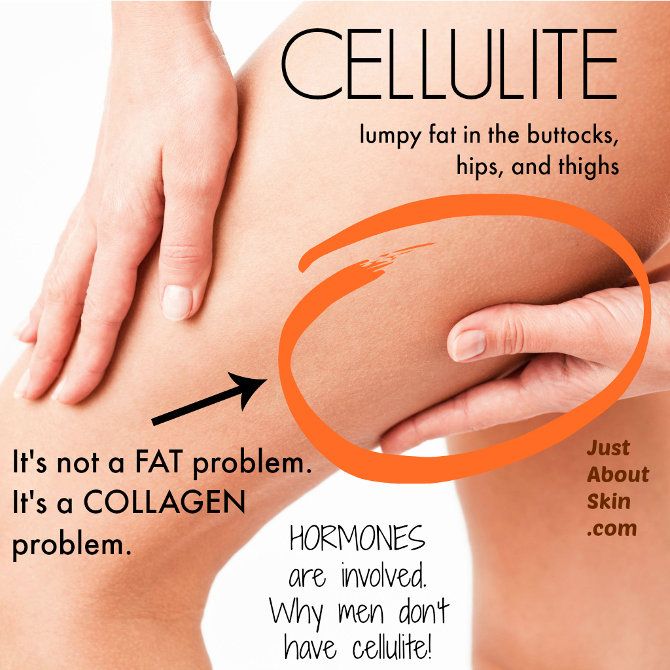 They can be up to several centimeters in size, painless when pressed, but in rare cases, with rapid growth, pain may appear due to compression of the nerve endings.
They can be up to several centimeters in size, painless when pressed, but in rare cases, with rapid growth, pain may appear due to compression of the nerve endings.
Doctors recommend removing a lipoma, despite the fact that it very rarely becomes malignant and is only a cosmetic flaw. This is due to the fact that with its rapid growth, surrounding tissues can be compressed and infected.
Fibroma
It is a benign formation consisting of connective fibrous tissue. Looks like a lump under the skin. There are two types of fibroma: soft and dense. It grows over the years, its shape in most cases is spherical.
Atheroma
The cause of atheroma is a blockage of the excretory duct of the sebaceous gland, as a result of which the secret from it cannot stand out. The tumor is benign, consists of fat and epithelial cells, dense to the touch. The size of the formation is variable: from a centimeter to a chicken egg or more.
Atheromas mainly occur on the scalp, on the back and face.

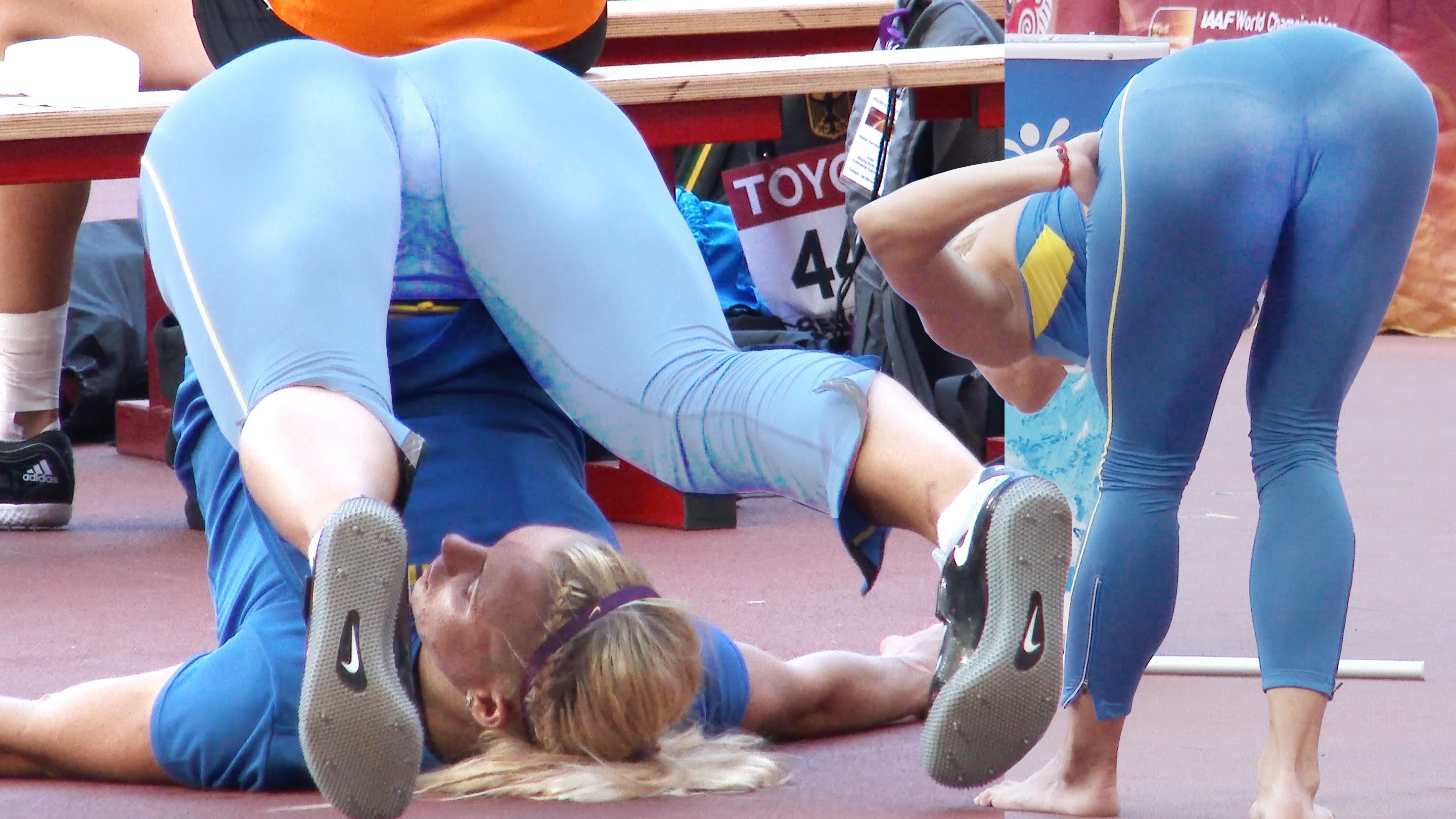
 Antiperspirant should not be applied to the butt crack or perineal area. Before using, discuss application techniques with your doctor.
Antiperspirant should not be applied to the butt crack or perineal area. Before using, discuss application techniques with your doctor.
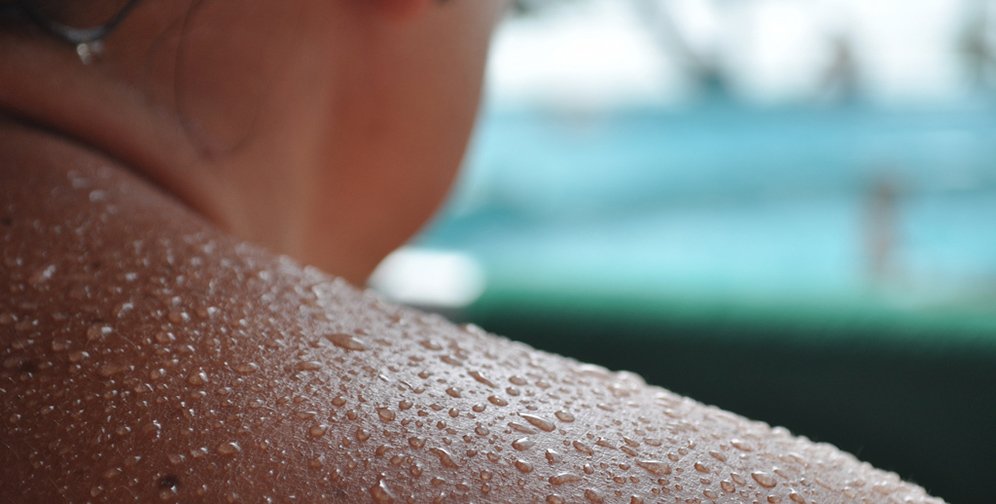 Exercising improves your attitude by releasing your natural feel-good endorphins. It can be as simple as walking every day, but you can get a good workout shooting hoops with your buddies, playing some touch football, or riding a bike. Choose what you love to make it easier to stay active.
Exercising improves your attitude by releasing your natural feel-good endorphins. It can be as simple as walking every day, but you can get a good workout shooting hoops with your buddies, playing some touch football, or riding a bike. Choose what you love to make it easier to stay active. They contain tannic acid, which works the same way as the astringent effects of vinegar by constricting and shrinking pores. Tea reduces sweat but also kills bacteria. You can apply it directly using the tea bags steeped in boiling water. Just make sure you let it cool first.
They contain tannic acid, which works the same way as the astringent effects of vinegar by constricting and shrinking pores. Tea reduces sweat but also kills bacteria. You can apply it directly using the tea bags steeped in boiling water. Just make sure you let it cool first. They not only cause you to sweat but also keep in all that dampness.
They not only cause you to sweat but also keep in all that dampness. 7 Effect of massage and physiotherapy on resorption of injection bumps
7 Effect of massage and physiotherapy on resorption of injection bumps 13.0.5 Are there any contraindications to the use of cone dissolvers?
13.0.5 Are there any contraindications to the use of cone dissolvers?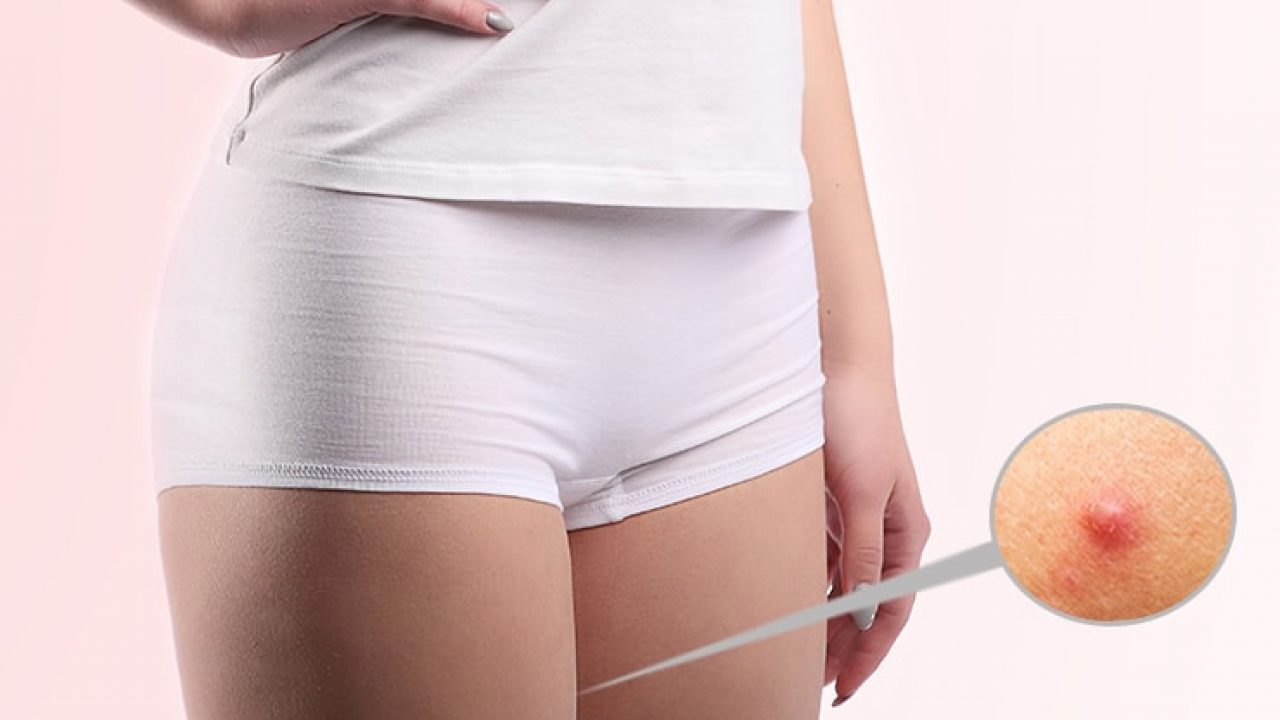 There are special ointments, gels and creams that can speed up the resorption of the bumps and reduce soreness. They may contain various active ingredients such as heparin and troxerutin.
There are special ointments, gels and creams that can speed up the resorption of the bumps and reduce soreness. They may contain various active ingredients such as heparin and troxerutin.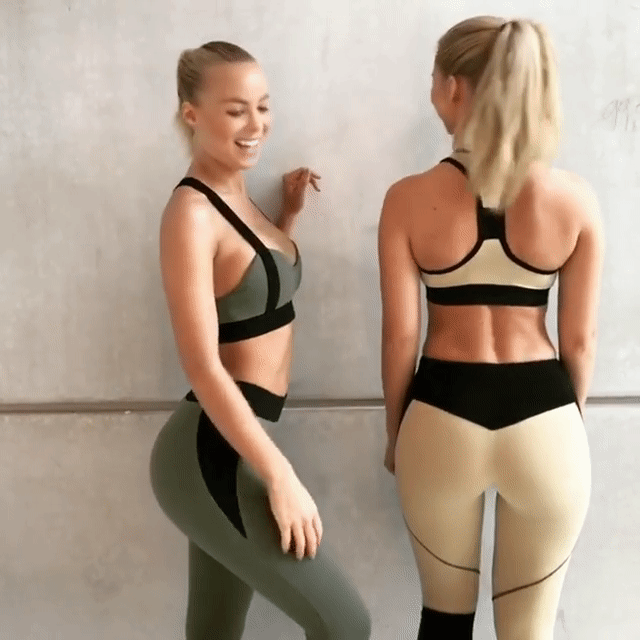 This will help reduce swelling and relieve pain.
This will help reduce swelling and relieve pain.